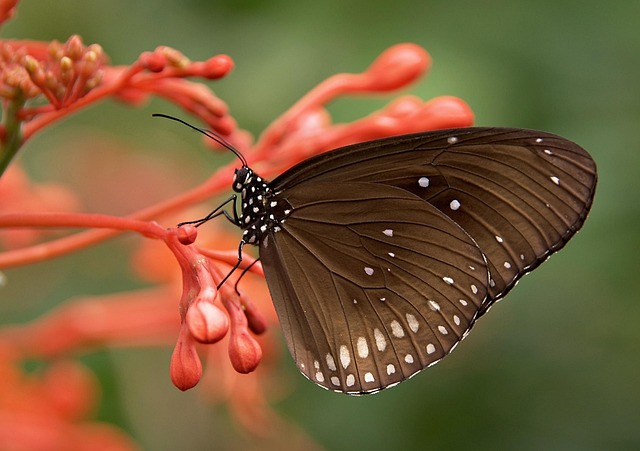Psocids, or book lice, pose significant issues in residential and commercial settings due to their rapid breeding and preference for dark, secluded areas with starchy materials. Effective psocid infestation removal requires understanding their behavior and life cycle. Key steps include regular inspections to identify breeding sites (cracks, crevices, hidden spaces), targeted treatments disrupting their lifecycle, and searching for signs of activity in hard-to-reach areas. A multi-pronged approach involving breeding site addressing, sealing entry points, removing food/water sources, professional pest control services, and regular monitoring is crucial for successful psocid infestation removal and preventing recurrences.
“Uncover and eliminate psocid infestations with our comprehensive guide. Understanding these tiny yet tenacious creatures and their breeding patterns is key to effective control. Learn why thorough inspections are vital in identifying psocid activity and hidden breeding sites. We’ll equip you with a step-by-step approach to locate and eradicate these pests, ensuring a lasting solution for psocid infestation removal.”
Understanding Psocid Infestations and Their Breeding Patterns
Psocids, also known as book lice, are tiny insects that can cause significant problems in homes and commercial spaces. Understanding their infestation patterns is crucial for effective psocid infestation removal. These pests thrive in dark, quiet areas where they can feed on starchy materials like books, fabrics, and even wallpaper. They breed rapidly, with female psocids laying hundreds of eggs over their short lifespan. This rapid reproduction makes them hard to control once established.
Breeding sites are often found in hard-to-reach places such as cracks, crevices, and behind walls. Identifying these sites is key to a successful removal strategy. Regular thorough inspections help pinpoint active breeding areas, enabling targeted treatments that disrupt their life cycle. By addressing both visible signs of infestation and hidden breeding grounds, professionals can ensure effective psocid infestation removal and prevent future recurrences.
The Role of Thorough Inspections in Psocid Control
Thorough inspections play a pivotal role in effective psocid infestation removal. By meticulously examining areas prone to psocid activity, such as cracks, crevices, and hidden spaces, professionals can uncover breeding sites that would otherwise remain undetected. This proactive approach is crucial in disrupting the psocid life cycle and preventing further spread.
During these inspections, trained experts look for signs of psocid presence, including tiny eggs, nymphs, and adults. They also assess the environmental conditions that foster psocid breeding, such as moisture levels and available food sources. Armed with this knowledge, they can implement targeted treatments, eliminating existing infestations and creating a hostile environment for future psocid activity, thus ensuring successful psocid infestation removal.
Identifying Common Breeding Sites: A Step-by-Step Guide
Psocids, or book lice, are tiny insects that can multiply quickly and cause significant damage to various materials, from books and fabrics to stored food items. Identifying their breeding sites is a crucial step in effective psocid infestation removal. Here’s a step-by-step guide to help you locate common breeding grounds:
1. Inspect Dark, Moist Areas: Psocids prefer environments that are dark, secluded, and moist. Start your search in corners of rooms, behind bookshelves, under furniture, and in areas where water leaks or high humidity exists. These hidden spots provide the ideal conditions for their eggs and nymphs to develop undisturbed.
2. Examine Materials for Webbing and Eggs: Psocids often spin fine webbing over items they inhabit. Look for tiny webs, especially on fabric, paper products, and stored foods. Eggs are minute and can be difficult to spot with the naked eye; use a magnifying glass if available. They typically resemble small white dots or specks and are often found in clusters.
3. Check for Infested Items: Identify any items that show signs of psocid activity. This could include musty odors, tiny pinholes in packaging (especially in cereals or dried goods), or the presence of live lice or shed skins. Remove and isolate suspected items to prevent further contamination.
4. Inspect Ventilation Systems and Air Ducts: Psocids can travel through ventilation systems and infiltrate buildings through air ducts. Inspect these areas for signs of infestation, such as webs or the presence of live insects. Regular cleaning and sealing entry points in these systems are essential for psocid infestation removal.
5. Look for Remnants and Nesting Sites: Check for remnants of psocid activity like shed skins, exoskeletons, or empty egg cases, which can indicate where they have been active previously. Nests may be found in crevices, behind walls, or under flooring, making thorough cleaning challenging.
Effective Strategies for Eliminating Psocids and Preventing Recurrence
To effectively eliminate psocids and prevent recurrence, a multi-pronged approach is essential. Firstly, identify and address breeding sites by thoroughly inspecting areas with organic debris, moisture, and hidden spaces. Seal entry points and remove sources of food and water to disrupt their life cycle. Professional pest control services can employ targeted treatments using safe, environmentally friendly chemicals to eradicate existing psocid populations.
Regular monitoring and maintenance are key to long-term success. Keep your environment clean and dry, promptly addressing any signs of moisture or organic buildup. Implement preventive measures like sealing cracks and gaps, improving ventilation, and maintaining a pest-free habitat. Regular inspections and quick responses to new infestations will significantly reduce the chances of psocid reintroduction.
Psocid infestations can be effectively managed through a combination of understanding their behavior, conducting thorough inspections, and implementing targeted strategies. By identifying breeding sites and employing appropriate control measures, it is possible to achieve successful psocid infestation removal and prevent recurrences. Regular and meticulous inspections, coupled with the elimination of suitable habitats, are key to maintaining a psocid-free environment, ensuring peace of mind for residents and businesses alike.
